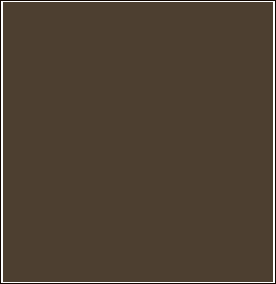 |  |
 |









Construction of the synagogue |
On September 1, 1869 the Emperor approved a resolution of the Committee of Ministers allowing the Jews of Petersburg to build a synagogue. As early as September 11th representatives of all the Houses of Prayer elected a "Building Committee" with Horace Gunzburg at its head. During the fundraising campaign the largest donation was made by Evzel Gunzburg (seventy thousand rubles). S. Polyakov and I. Vavelberg contributed twenty-five thousand rubles each; A. Varshavsky and A. Zak, ten thousand each. Other contributions (170 in total) ranged from seven thousand rubles (Leon Rosenthal) to two rubles (Doctor Samsonovich of Kiev). It was also decided to sell half of the seats for permanent use, the proceeds going to construction. When the funds proved to be insufficient, the Committee had to borrow money first from the St. Petersburg-Moscow Commercial Bank, and then from Horace Gunzburg, Samuel and Daniel Polyakov.![]()
Another problem was to find a suitable construction site. Petersburg Police Chief Fedor Trepov prohibited buying a plot of land at the corner of Gorokhovaya street and the embankment of the Fontanka river because of its proximity to a Russian Orthodox church. An attempt to buy a plot of land on Bolshoy Tsarskoselsky Avenue near the Obukhovsky bridge ended in failure, too. At last, in the summer of 1872 community secretary Lev Gordon found a site at the corner of Ofitserskaya and Bolshaya Masterskaya streets. Trepov refused permission again, arguing that "a Jewish synagogue may not be built in a populated part of the city where the rabble and the dirt incidental to it would collect". It was not until Trepov's dismissal in 1878 that the community succeeded in obtaining permission to buy A. Rostovsky's premises on Bolshaya Masterskaya street.
The purchase was made for sixty five thousand rubles on January 16, 1878.![]()
The design of the building had been under discussion since 1878. Prominent Russian art critic Vladimir Stasov took an active part in it, arguing that the synagogue should be built in the Moorish style. Lev Gordon replied that "Jews never kept to any particular style in building their temples. They would borrow the style from the people who dominated in the given area in the given period" and, while preserving the internal sense of their faith, "paid little attention to the exterior". In July 1879 a contest was announced. The special jury of professors Grimm, Belinsky and Stasov gave preference to the design of Bakhman and Shaposhnikov. However, when the design was submitted to Alexander II in March 1880, his reply was: "the dimensions of the building should be revised in order to make it more modest". This was a blow to the community. Fortunately, the architects agreed to make a new design free of charge, and a sketch of the synagogue was finally approved by Alexander III on May 16, 1883.![]()
The design having been finalized, the work started in 1883 under the supervision of the Building Committee chaired by A. Kaufman. A. Malov was appointed the managing architect, assisted by S. Klein and B. Girshovich. In the summer of 1883 the work was suspended until 1884 in order to reduce costs. N. Benoit was placed in charge of the project and S. Polyakov was appointed chairman of the Building Committee.
As early as the first day of the festival of Sukkoth, October 13, 1886, the Small Synagogue was sanctified. Its ceiling was sculpted by Moisey Izrailevich Anolik. The Aron Ha-Kodesh was made by carpenter Berman and gilder Solomon Antovil. The Small Synagogue housed the Temporary Synagogue until the large hall was opened, and afterwards became home to a Hassidic synagogue.![]()
The building was completed in 1888 with the ornamentation of the dome. The basic plastering, painting and woodwork were done by contractor M. Himmelfarb; benches on the first floor were made by carpenter Berman; the cast-iron railing of the staircases was produced at Isidor Goldberg's plant. Evzel Gunzburg's sons donated the Aron Ha-Kodesh to the Big Synagogue in memory of their father. The Big Synagogue was solemnly sanctified on December 8, 1893. Community leaders opened the central door with a silver key and carried seven Torah scrolls into the hall. The chairman of the community board, Baron H. Gunzburg, carried the first scroll. M. Varshavsky and L. Polyakov followed him with lit candles. Thus the St. Petersburg Big Choral Synagogue was opened after a 24-year-long history of authorization and construction.![]()
The Big Choral Synagogue in St. Petersburg. A postcard issued in the early 20th century


